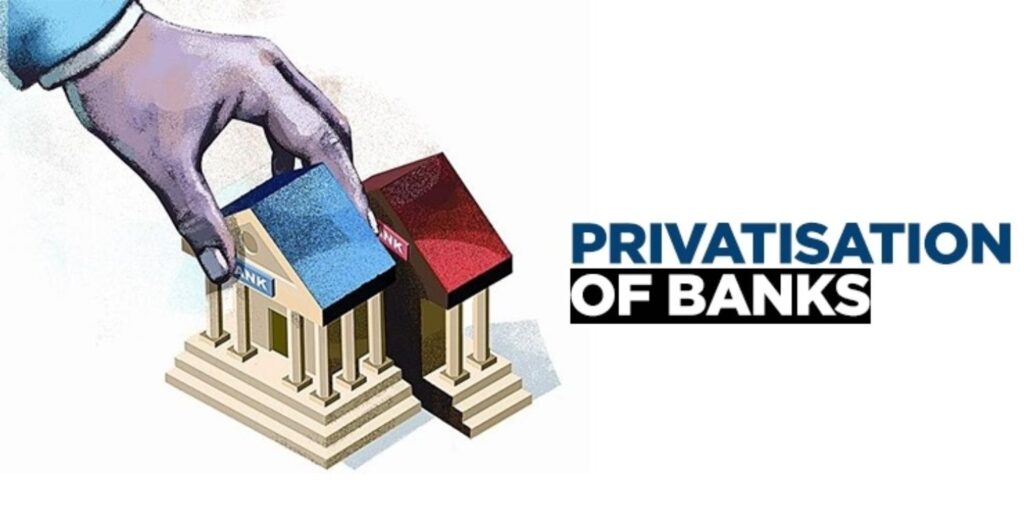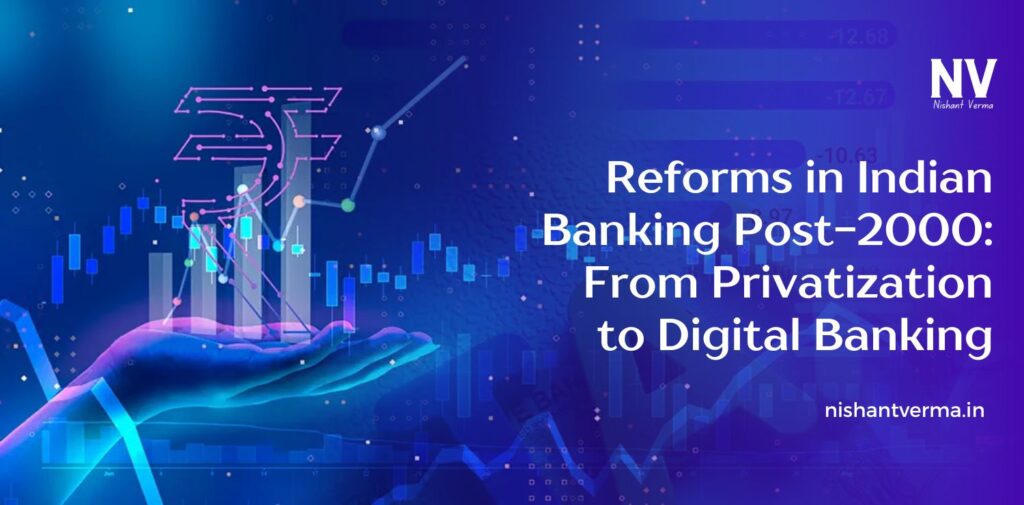The banking sector in India has undergone a remarkable transformation since the turn of the 21st century. In the past two decades, significant reforms have reshaped the industry, making banking more accessible, efficient, and customer-friendly. From the privatization of banks to the rise of digital banking, these changes have not only modernized India’s financial system but have also paved the way for economic growth and financial inclusion. This article delves into the key reforms in Indian banking since 2000 and their impact on the country’s economy and society.
Privatization of Banks: Opening the Door to Competition
One of the most significant reforms in the Indian banking sector post-2000 has been the privatization and liberalization of public sector banks. Before the turn of the century, India’s banking sector was largely dominated by government-owned banks, which were often criticized for inefficiency, slow decision-making, and lack of customer-centric services. However, the government began to recognize the need for more competition and efficiency in the sector.
In 2000, the Indian government allowed private banks to operate alongside public sector banks, which opened the door for more competitive practices. The privatization process started with banks like ICICI Bank, HDFC Bank, and Axis Bank, which were established as private banks and rapidly expanded their services across the country. Over time, these private banks began to offer better customer service, more innovative products, and quicker responses to market demands compared to their public sector counterparts.
The privatization of banks introduced competition, which in turn led to improvements in banking services. Customers now had more choices, and banks were forced to innovate and adopt better practices to attract and retain clients. Private banks also played a key role in improving technology adoption in the sector, making banking more accessible to the masses.

Banking Sector Reforms: Strengthening the Regulatory Framework
Another important reform in Indian banking post-2000 was the strengthening of the regulatory framework. The Reserve Bank of India (RBI), which oversees India’s banking sector, introduced several measures to improve the stability and health of the banking system. These included more stringent capital adequacy requirements, which ensured that banks maintained enough capital to cover potential losses. The Basel III guidelines, which came into effect in India in 2013, further strengthened the banking sector by setting higher capital requirements for banks, improving their ability to withstand economic shocks.
Additionally, the Financial Sector Legislative Reforms Commission (FSLRC) was established to recommend reforms that would help modernize and streamline India’s financial regulatory framework. These reforms aimed at creating a more transparent and accountable banking system, ensuring that banks operated in a fair and efficient manner.
The introduction of Non-Performing Asset (NPA) management systems also became a focus after 2000. With the growing issue of bad loans in the banking sector, the RBI implemented more rigorous mechanisms to monitor and control NPAs. Measures such as the Insolvency and Bankruptcy Code (IBC) were introduced to help banks recover bad loans and improve their overall financial health.
Financial Inclusion: Expanding Banking Access to All
Financial inclusion has been a major priority for the Indian government, especially after 2000. India has a large rural population, many of whom had limited or no access to banking services. To address this, the government and the RBI focused on expanding banking services to underserved areas through initiatives like Pradhan Mantri Jan Dhan Yojana (PMJDY), launched in 2014. This initiative aimed to provide every household in India with access to a bank account, helping people save money, receive government benefits, and access credit.
The push for financial inclusion also led to the establishment of Small Finance Banks and Payments Banks, which catered specifically to low-income groups and rural populations. These banks provided basic banking services like savings accounts, payments, and money transfers, ensuring that people in remote areas had access to essential financial services. The government also facilitated the opening of Biometric-based bank accounts linked to Aadhaar, India’s unique identity system, which made it easier for people to open accounts and access financial services without the need for traditional paperwork.
The introduction of financial literacy programs and digital banking initiatives has also played a crucial role in promoting financial inclusion. By offering simple and accessible banking services, the banking sector has been able to reach a wider audience, including those who were previously excluded from the formal financial system.

The Rise of Digital Banking: Revolutionizing the Banking Experience
One of the most significant transformations in Indian banking post-2000 has been the rise of digital banking. With the rapid growth of smartphones and internet connectivity, banking in India has shifted from traditional brick-and-mortar branches to digital platforms. Digital banking has revolutionized the way customers interact with banks, making banking services more convenient and accessible.
The National Electronic Funds Transfer (NEFT), Immediate Payment Service (IMPS), and Real Time Gross Settlement (RTGS) systems were introduced to facilitate easy, fast, and secure digital transactions. The development of mobile banking apps and internet banking services allowed customers to check their balances, transfer funds, pay bills, and even apply for loans without having to visit a bank branch.
The government also launched the Unified Payments Interface (UPI) in 2016, a real-time payment system that allows customers to link their bank accounts and make instant money transfers using their smartphones. UPI quickly gained popularity due to its simplicity, speed, and low transaction fees, making it one of the most widely used payment methods in India. The success of UPI has made India a leader in digital payments, with millions of people relying on this platform for day-to-day transactions.
Moreover, the rise of fintech companies has further enhanced the digital banking ecosystem. Companies like Paytm, PhonePe, and Google Pay have developed innovative solutions for payments, lending, and investments, making it easier for people to manage their finances digitally.
Cybersecurity and Challenges in Digital Banking
With the increasing shift to digital banking, the issue of cybersecurity has become more prominent. The rise in online transactions has led to an increase in cybercrimes such as fraud and hacking. To address these concerns, the RBI and other regulatory bodies have implemented stringent guidelines to ensure the security of digital banking platforms. These measures include two-factor authentication, encryption, and real-time monitoring of suspicious activities.
While digital banking has brought immense convenience, it has also posed challenges, particularly for people in rural areas who may not have the necessary infrastructure or digital literacy to fully benefit from online banking services. The government and banks have been working together to bridge this gap by promoting digital literacy programs and improving access to smartphones and internet connectivity in rural regions.

The Future of Indian Banking: Innovation and Sustainability
As India moves forward, the future of banking looks set to be shaped by continued innovation and a focus on sustainability. The banking sector is expected to see further advancements in artificial intelligence (AI), blockchain technology, and machine learning, which will enable more personalized banking experiences, improve risk management, and enhance fraud detection.
The push for a cashless economy will also continue, with digital payments and mobile wallets becoming even more widespread. The growth of green banking, where banks invest in sustainable projects and promote eco-friendly financial products, will be another key trend in the coming years. Indian banks are also increasingly focusing on promoting financial literacy to empower individuals to make better financial decisions and improve their overall economic well-being.
Conclusion
Reforms in Indian banking since 2000 have transformed the industry in ways that were once unimaginable. From the privatization of banks to the widespread adoption of digital banking, these changes have not only improved the banking experience but have also contributed to financial inclusion and economic growth. As the banking sector continues to evolve, innovation will remain at the core of its future, ensuring that India’s financial system remains robust, secure, and accessible to all. The banking reforms have laid a strong foundation for India’s financial future, and the journey of modernization will continue to benefit millions of customers across the country.




